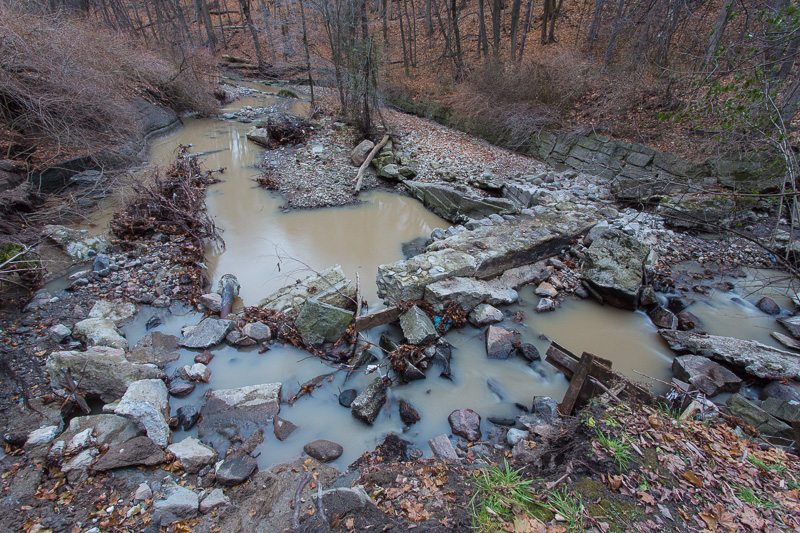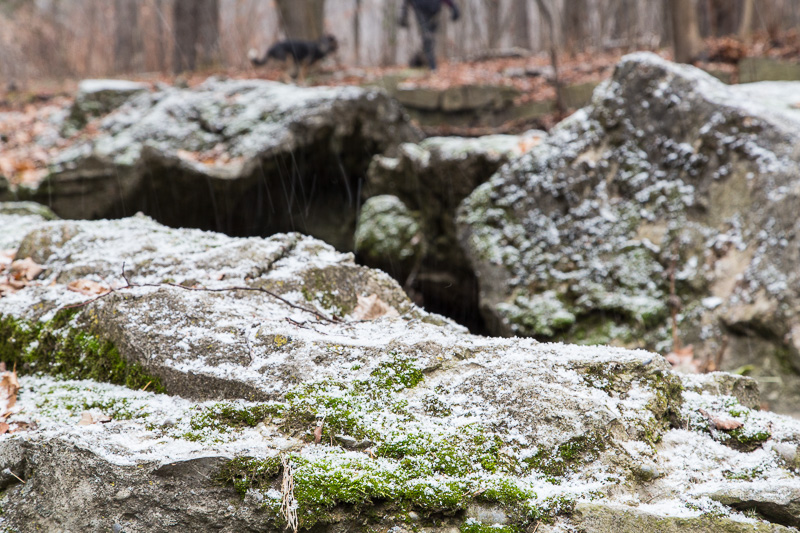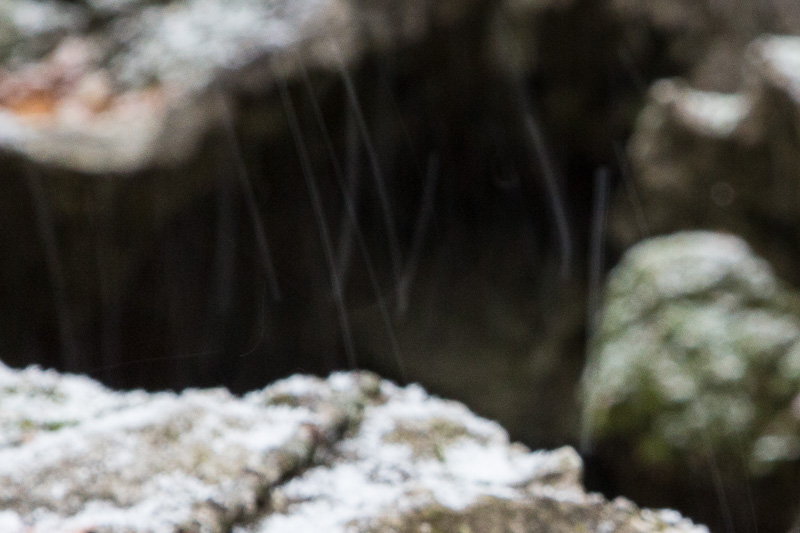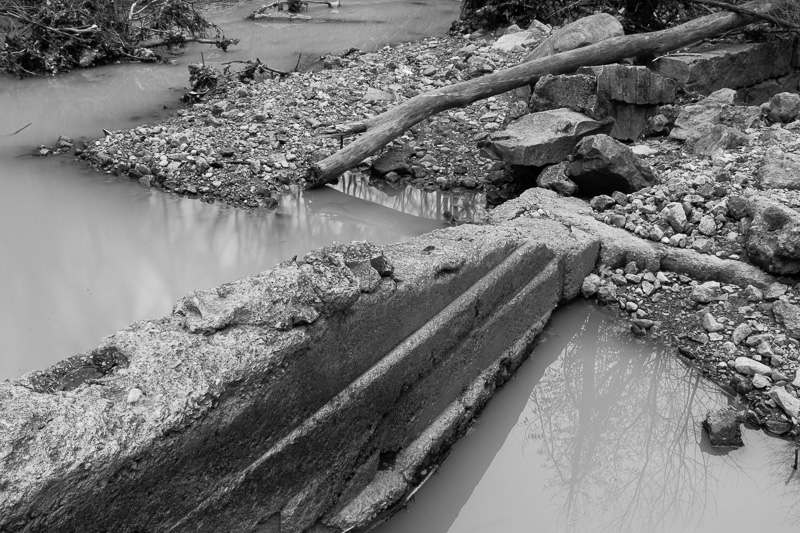Yesterday, I got up before dawn and walked up Yellow Creek in David A. Balfour Park to a place where a small dam has crumbled.

Low light, flowing water, perfect for long exposures. And then it started to snow. Not hard. Just fluffy white flakes that gave the ground a gentle dusting. Nevertheless, it spoiled my plans or expectations or whatever. Naturally, I complained on twitter. This is what I posted:
Shit. Now there’s fluffy snow flakes coming down fucking up my long exposures. #photography
The problem with the post is that it’s technically wrong. The longer an exposure, the less impact a snow flake has on the result. It’s the short exposures that get cluttered up with snow flakes. Here are two shots to illustrate. The first shows snow flakes settling on moss. In the background you can see the blurred form of a dog and the legs of its master. In some of the darker areas below the dog, you can see faint streaks of white. I’ve enlarged that area for reference. Because the shutter speed is 1/8, it’s fast enough to catch traces of snow passing through the frame.


Compare that to another shot where the shutter is open for 30 seconds. Individual snow flakes aren’t in the frame long enough to leave much of a trace. Even less so if I had put on a neutral density filter and left the shutter open for a couple minutes. But I wasn’t thinking clearly.

The lesson: when there’s a gentle snow fall, it doesn’t mean you’ll end up with white streaks through your images if you remember to leave the shutter open longer.